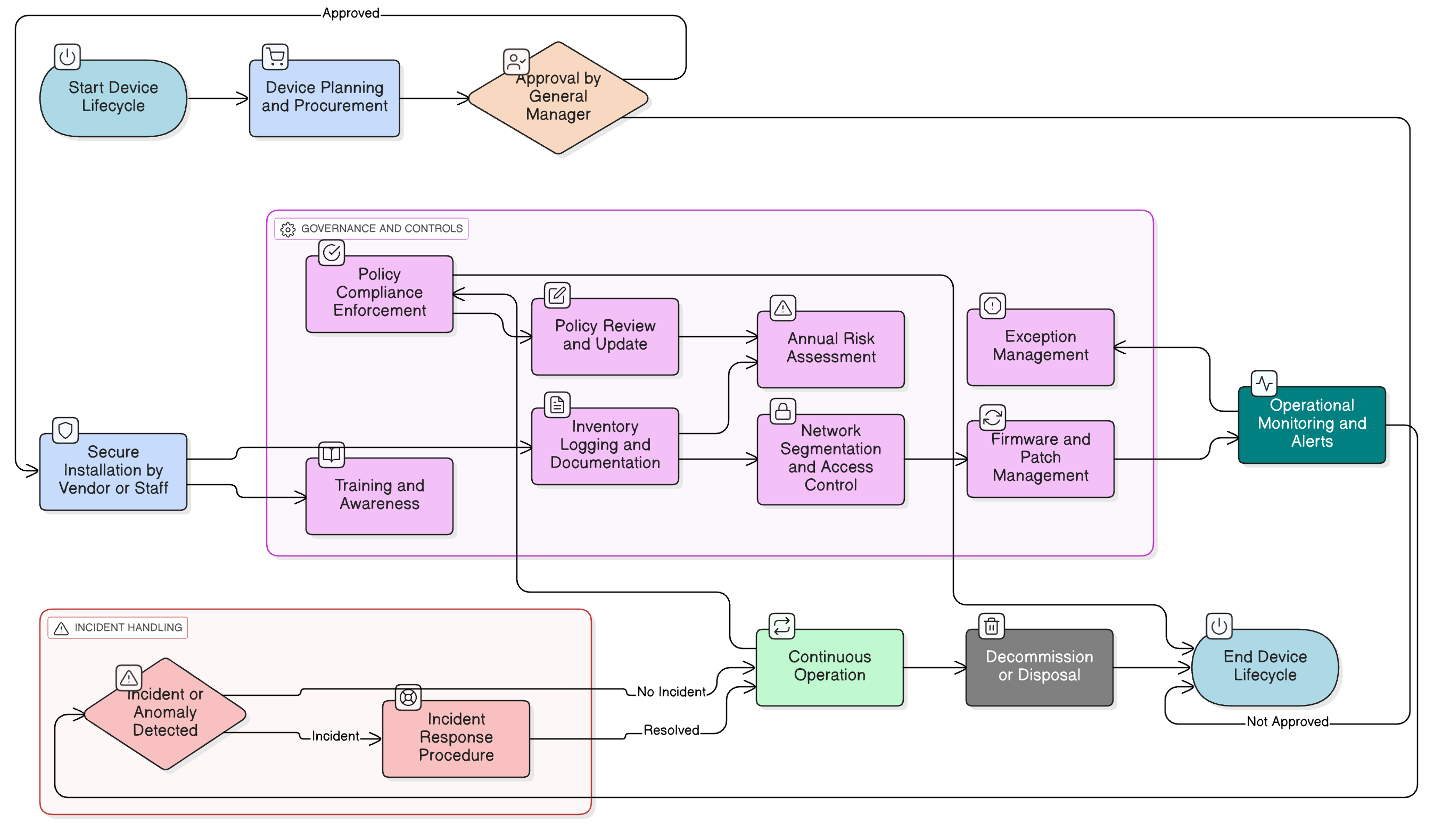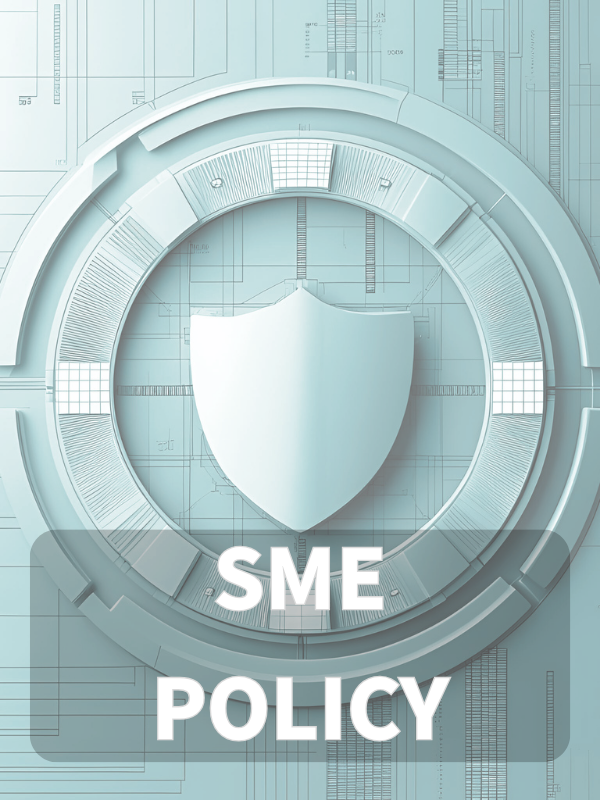Overview
This SME-adapted IoT/OT Security Policy defines mandatory rules for securing, managing, and monitoring all connected devices in office, production, and remote environments. With clear roles for the General Manager and simple controls, it ensures SMEs can enforce best-practice IoT/OT protection and regulatory compliance without specialist IT teams.
Safeguard Devices
Protect office, production, and warehouse IoT/OT systems from unauthorized access and disruption.
SME-Focused Controls
Designed for SMEs with clear roles, no need for dedicated IT teams.
Vendor and Third-Party Compliance
Mandates secure installation and accountability from external providers.
Regulatory Compliance Built-In
Aligns with ISO 27001, NIS2, DORA, GDPR, and NIST for full business protection.
Read Full Overview
Policy Diagram

Click diagram to view full size
What's Inside
Scope and Rules of Engagement
Device Inventory and Segmentation
Third-Party and Vendor Security Measures
Firmware and Patch Management
Incident Response for IoT/OT
Annual Risk Assessment and Exception Handling
Framework Compliance
🛡️ Supported Standards & Frameworks
This product is aligned with the following compliance frameworks, with detailed clause and control mappings.
| Framework | Covered Clauses / Controls |
|---|---|
| ISO/IEC 27001:2022 | |
| ISO/IEC 27002:2022 | |
| NIST SP 800-53 Rev.5 | |
| EU GDPR |
Article 32
|
| EU NIS2 | |
| EU DORA | |
| COBIT 2019 |
Related Policies
Access Control Policy-SME
Enforces device-level login controls, strong password usage, and authorized access procedures for IoT and OT platforms.
Remote Work Policy-SME
Prevents use of remote access to IoT/OT dashboards via insecure or unapproved channels.
Data Protection And Privacy Policy-SME
Applies if IoT devices (e.g., security cameras) process or record personal data, ensuring compliance with GDPR.
Incident Response Policy-SME
Defines procedures for detecting, reporting, and resolving IoT or OT incidents, including suspected tampering or operational failure.
Social Media And External Communications Policy-SME
Ensures that no device information or network layout is shared externally unless approved.
About Clarysec Policies - IoT-OT Security Policy - SME
Generic security policies are often built for large corporations, leaving small businesses struggling to apply complex rules and undefined roles. This policy is different. Our SME policies are designed from the ground up for practical implementation in organizations without dedicated security teams. We assign responsibilities to the roles you actually have, like the General Manager and your IT Provider, not an army of specialists you don't. Every requirement is broken down into a uniquely numbered clause (e.g., 5.2.1, 5.2.2). This turns the policy into a clear, step-by-step checklist, making it easy to implement, audit, and customize without rewriting entire sections.
End-to-End Lifecycle Security
Covers installation, operation, monitoring, and secure disposal to minimize IoT/OT security gaps and risks.
Quarterly Inventory and Update Audits
Mandates regular reviews to identify outdated, unpatched, or unsupported devices before vulnerabilities appear.
Exception Handling with Compensating Controls
Allows time-limited exceptions, but always requires documented risk treatment and mitigation steps.
Frequently Asked Questions
Built for Leaders, By Leaders
This policy was authored by a security leader with 25+ years of experience deploying and auditing ISMS frameworks for global enterprises. It's designed not just to be a document, but a defensible framework that stands up to auditor scrutiny.
